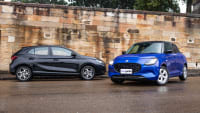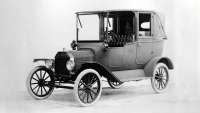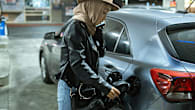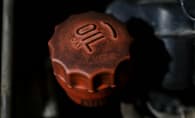A modern car dashboard is a very complex thing these days. And car dashboard lights have really followed suit.
Back in the good old days, a car was lucky to have a fuel gauge, but nowadays, the sheer amount of equipment on board a typical car means the dashboard is bristling with information. And much of that comes in the form of dashboard lights.
In fact, they’re not just lights any more, they’re often car dashboard signs and symbols. A bit like car emojis, if you like.
Some of these lights are there to tell you about what’s happening at that point in time, some are warnings or notifications that some check or maintenance will be needed soon, and others are actual warning lights that are your signal to pull over when it’s safe and stop the car.
Because of this mass of information, manufacturers have moved to colour-code the car warning light to make them easier to understand on the fly.
The information lights are generally green or blue and will let you know things like your high-beam, fog lights or cruise control are switched on at the moment.
.jpg)
A yellow or orange dashboard light is your signal that something on the car will be needing attention sooner rather than later.
These can be a check-engine light which is asking you to have the car scanned to see what faults have occurred, or a service-due light telling you that the car needs to be booked in for regular maintenance within the next few hundred kilometres.
The red dashboard light is the one you really don’t want to see, as this suggests that something is very wrong right now and needs to be fixed before you go any farther.
.jpg)
As dashboard light meanings go, these are usually all bad news.
This can be something like low oil pressure in the engine, a high operating temperature, failed electrical system or even brake failure or a problem with the car’s ABS.
In any of these cases, you need to stop the car now and have it towed to a workshop. Continuing to drive with a red light glowing on the dash will likely leave you stranded because the car is trying to tell you it’s about to fail or blow up in some pretty major way.
.jpg)
You’ll see, each time you start the car, that a range of warning and information lights illuminate when you turn on the ignition.
This is normal and nothing to worry about. But once the car is running, these should go out in a few seconds. If they don’t, that’s when you need to check for problems.
So what are some of the major car dashboard symbols and meanings?
Check engine light: This is usually orange or yellow and means the car’s computer has detected a problem with one of the car’s many systems. The cause needs to be investigated as soon as possible.
.jpg)
Battery light: This will usually be red and suggests the charging system has stopped working. Continue to drive and you’ll eventually run out of electrical power and the car will stop. This needs attention right now.
High temperature light: Another red one that is telling you the car’s engine is overheating. Stop right now or you’ll probably ruin the engine. Don’t stop and open the radiator cap, however. Its contents are already boiling and can scald you. Opening the bonnet will help the engine cool faster, though.
Oil pressure: Often, by the time you’ve seen this red light, it’s already too late. The light is telling you that the engine has lost oil pressure which is crucial to its survival. If you stop immediately, you might save the engine.
Oil level light: This can be red or orange but either way, you shouldn’t ignore it because it means your engine is low on oil. Some carmakers configure the light to show up when you need to add a litre of oil, on other cars it means the level is already critically low.
.jpg)
Car door ajar: Just because you think you’ve closed the door of the car, doesn’t mean it’s fully latched and secure. If the car thinks there’s a door not closed properly, it’ll light up the relevant light, usually in red. The semi-open door will be the last one you check.
Low fuel: Running out of fuel is its own punishment, so to help you avoid that, the car will flash up an orange (sometimes red) light to warn you if you haven’t been watching the fuel gauge. Generally you’ll have about 70km of range left when the light comes on, but don’t push your luck.
Park brake: If you’ve driven off without full releasing the park brake, you’ll get a red light to let you know. You don’t even need to stop for this one, provided you release the park brake right away.
.jpg)
Traction control: If you’ve been too enthusiastic with the throttle (particularly on a wet road) you’ll probably see an orange or yellow light flickering on. This will be the traction control warning light that is telling you you’ve run out of tyre grip and the traction control has stepped in to stop your wheels from spinning.
Tyre pressure warning: Many modern cars have on-board systems that monitor the pressure in each tyre. If that pressure becomes too low, you’ll often get a warning light or even a graphic on your dashboard.
If the tyre has lost pressure suddenly, you still have a problem, but if it’s a slower leak, the light might warn you in time to get to a service station and pump up the tyre.
Tyres lose pressure just sitting around, so the warning light doesn’t necessarily mean you have a puncture, but it’s worth checking out anyway. And if you’re regularly seeing the tyre pressure warning light, you’re not checking you tyre pressures often enough.
.jpg)
Airbag: Any problem with the car’s airbag systems means its unsafe to drive as the airbags may not deploy properly in a crash.
Often, though, the fault is with what’s called a clock-spring, which is an electrical connection that allows the steering wheel to turn while maintaining an electrical contact between the airbag in the steering wheel and the sensors that will trigger it. Either way, driving around with the airbag light on (like the check engine light) means the car is technically unroadworthy.
ABS: If you’re seeing an ABS symbol lit up, you most probably have a problem in the braking system that isn’t allowing the anti-lock brakes to function properly. ABS is a life-saver, so if it isn’t working, your car is inherently unsafe until the problem is sorted.





.jpg)
.jpg)



.jpg)
.jpg)

.jpg)
.jpg)

_0.jpg)
.jpg)
.jpg)
.jpg)



.jpg)



